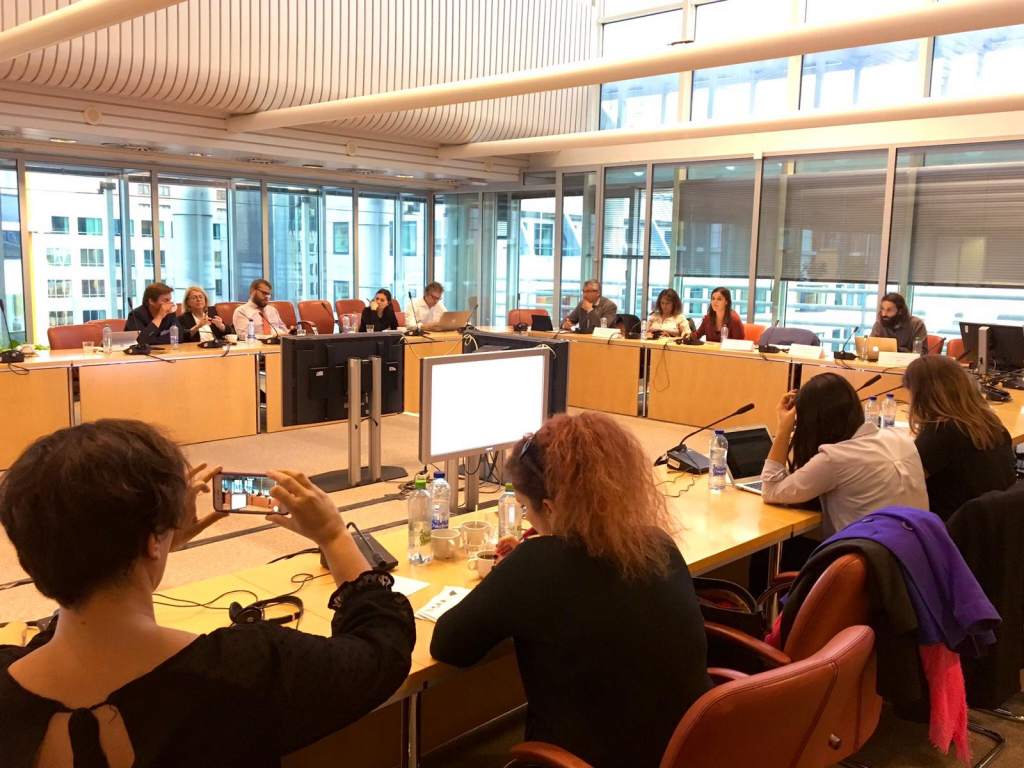 Share this!
Share this!Massively thought-provoking…
That was the first reaction of one of the participants to the conference. The final conference of AMiD project. Why provoking? Because the topic is pretty new. And because it matters. Because as panellists and participants, there were representatives from the local authorities, disabilities organisations, service providers and international institutions. Because migration is not a problem, but a reality.
Not just a conference…
Gathering together this variety of participants had a purpose: to help them work together to shape recommendations. Just as in the project, it was a variety of organisations from different backgrounds that AMiD happen.
So first came a round of panellists to open up the debate: diversity, data and evidence, a common European framework of welcomes, all with migration as a cross-cutting theme.
After a wave of presentations and questions, participants split in three groups to discuss and agree on recommendations. They included:
- Improving capacity for CSOs – Civil Society Organisations working in the sector.
- To set and spread the multi-stakeholder approach to inclusion.
- Engagement to raise the topic of migrants with disabilities in the next Disability Strategy 2020-2030
What we heard from the panellists…
Migration, disability, diversity, migration as transversal cut to health or education, Global compact. All those where key words shared with the audience.
Conny Reuter, Secretary-General of Solidar, gave insights on migration as first something linking the all spectrum of social life: health, education, employment, housing. That was the kick-off to understand the dimension of what migration is.
Nuria Diez Guardia, representing the European Commission’s DG Home , was on the same line. As the DG in charge of the topic of migration and inclusion, DG Home Affairs works in collaboration with the other Directorates-General. That is the only way to set policies and resources for real inclusion.
But what about disability and migration? Ola Herinkson, IOM representative at the European Commission, reminded participants that the Global Compact for Migration have an eye for this group. That being, Objective No. 15, this is the part to look at and to work with.
Angela Unufe, CEO of Migrant & Minority Disability Network Europe, considered AMiD as a starting point to give more visibility to this group. “With AMiD we kicked off, but it is the right direction”.
Yaya Traore’ brought the voice of those who did the journey by boat to Europe. A tragic story, with a happy end. Despite his disability and the trauma he had to overcome, it was possible for him to learn the language of the hosting country and even get a job! “I was lucky,” he said. Yaya could be supported with proper services. Proof that it can be done!
What about the local authorities? Regions at AMiD
Oriol Amoros, Secretary of Equality, Migration and Citizenship of Catalonia (ES), made the point very clear. Local authorities, regions, can create vulnerabilities. How? With their laws, policies and bureaucracy. A little example: no official paper, no access to services or employment for migrants. On the other hand, regions have also the power to change that.
Marlene Niubo gave an overview of a mentoring programme for young migrants. That is one of the actions in place to support vulnerable groups. As Oriol Amoros reminded to all us, numbers say that 14% of European citizens has a disability and that in the 24% of all households there is one member with a migration background.
Multi-stakeholder and multi-level collaboration
Regions and local authorities can do more. But they can do better working in collaboration with the other organisations in society. The conference was a kind of lab in this sense. In the workshops, it was particularly encouraging to see how much NGOs, service providers, local authorities and international institutions have in common.
Kenneth Johannesson, AER politician from Varmland (SE), shared the experience of the AMiD CAB-Community Advisory Board. He and Angela Unufe, and the other CAB members sit together to understand, check and give advice to increase the overall quality of the project products. Specific work was carried out on the NAT (Needs Assessment Tool). Irena Guidikova, bringing the experience of the Intercultural City Programme from the Council of Europe, had only one statement on the multistakeholder approach: it works and it makes actions sustainable over time.
